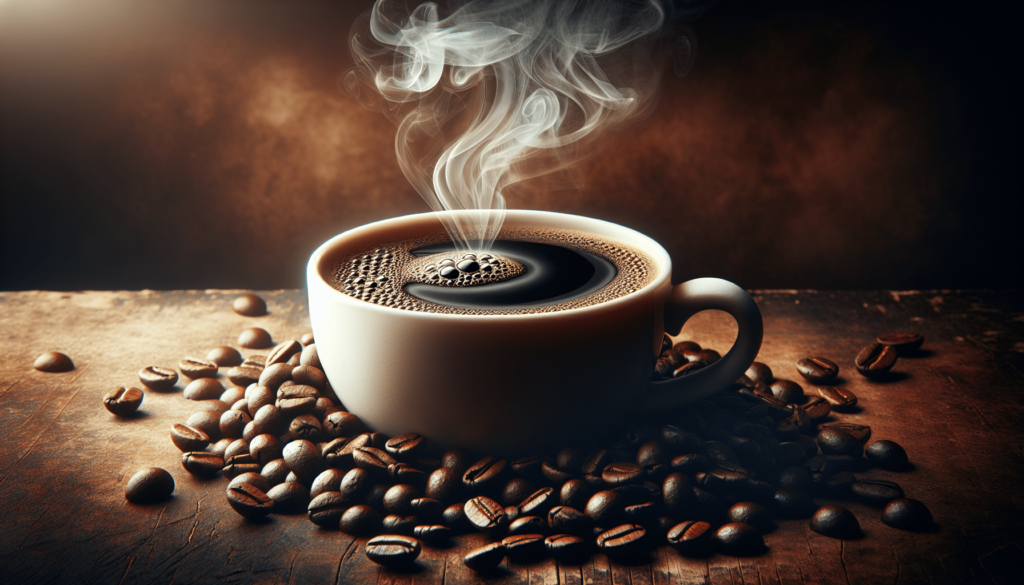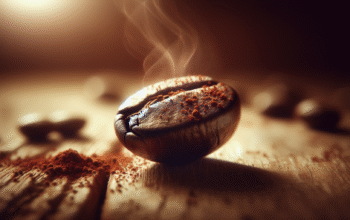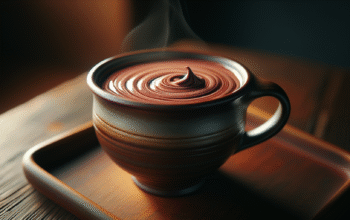What comes to mind when you think of dark roast coffee? Is it the rich aroma that awakens your senses or the deep, bold flavor that lingers on your palate? Dark roast coffee holds a special place in the hearts of many coffee enthusiasts around the world. In this article, you’ll learn about the distinct characteristics that define dark roast coffee, its brewing techniques, and how you can appreciate every sip to its fullest.

Understanding Dark Roast Coffee
Dark roast coffee is known for its rich, bold flavor, which comes from the roasting process. The beans are roasted at higher temperatures for a longer duration compared to lighter roasts. By the time they caramelize and darken, you experience a coffee that’s robust and complex.
The Roasting Process
To truly grasp what makes dark roast coffee so special, it’s essential to understand the roasting process. During roasting, green coffee beans undergo several chemical changes.
- First Crack: At around 385°F (196°C), the beans start to pop, similar to popcorn. This signifies the end of the light roast stage.
- Second Crack: Continuing the roast beyond this point triggers the second crack at around 435°F (224°C). In dark roasts, the beans become oily and develop their rich color and flavor.
The roasting time and temperature are crucial in determining the final taste profile. Let’s take a look at the characteristics of dark roast coffee compared to other roasts.
| Roast Type | Flavor Profile | Acidity Level | Caffeine Content |
|---|---|---|---|
| Light Roast | Fruity, floral | High | High |
| Medium Roast | Balanced, sweet | Medium | Medium |
| Dark Roast | Bold, smoky | Low | Slightly lower |
Unique Flavor Notes
Dark roast coffee has a flavor profile that often includes notes of chocolate, caramel, and toasted nuts, with nuances unique to the specific beans used. These flavors can be influenced by the bean’s origin and the roasting method, making each cup a delightful exploration.
Health Benefits of Dark Roast Coffee
Dark roast coffee isn’t just about flavor; it also offers several health benefits that you might find intriguing. While moderate coffee consumption can be part of a healthy diet, let’s delve into the specifics.
Antioxidants Galore
Dark roast coffee is packed with antioxidants. These compounds can help reduce inflammation and minimize oxidative stress. While both light and dark roasts contain antioxidants, dark roasts may have higher levels due to the longer roasting process.
Reduced Acidity
If you ever felt discomfort after drinking coffee, you might appreciate that dark roasts are generally less acidic than their lighter counterparts. This lower acidity can be easier on your stomach, making it a preferable option for those sensitive to acidity.
Mental Boost
The caffeine content in dark roast coffee can vary, but it often provides a good energy boost without leading to jitters. This makes dark coffee a great choice for those looking to enhance their focus or motivation.
Brewing Techniques for Dark Roast Coffee
Brewing dark roast coffee can significantly impact the final taste. If you’re looking to make the most out of your dark roast beans, consider these popular brewing methods.
French Press
The French press is a favored method for brewing dark roast coffee because it allows oils and sediments to remain in the cup, enhancing the flavor and texture.
Brewing Steps:
- Coarse Grind: Use a coarse grind for optimal extraction.
- Water Temperature: Heat water between 200°F and 205°F (93°C – 96°C).
- Brew Time: Steep for about 4 minutes before pressing.
Pour-Over
Pour-over brewing allows for precise control over the water flow and steeping time, which can accentuate the unique flavors of dark roast coffee.
Brewing Steps:
- Medium Grind: Use a medium grind for better extraction.
- Water Temperature: Use water heated to around 195°F to 205°F (90°C – 96°C).
- Brew Time: Pour water over the grounds slowly, aiming for a total brew time of about 3-4 minutes.
Espresso
Espresso is a concentrated form of coffee that uses a fine grind and high pressure. Dark roasts can create a rich, intense shot of espresso.
Brewing Steps:
- Fine Grind: Use a very fine grind suitable for espresso.
- Pressure: Brew using around 9 bars of pressure.
- Extraction Time: Aim for a total extraction time of 25-30 seconds.
How to Choose the Right Dark Roast
Selecting the right dark roast coffee can seem overwhelming with so many options out there. To make your decision easier, consider the following factors:
Bean Origin
Different regions produce coffee beans with distinct flavor profiles. Here are a few to consider:
- Sumatra: Rich, full-bodied coffee with earthy tones.
- Colombian: Often contains a sweet and nutty flavor with a smooth finish.
- Ethiopian: May offer berry-like flavors and floral notes.
Roast Date
Freshness matters! Look for bags that indicate the roast date rather than just the expiration date. Ideally, you should consume coffee within a few weeks of roasting for the best taste.
Grind Size
If you’re brewing at home, consider purchasing whole beans and grinding them just before use. The grind size can affect the extraction level and overall flavor.

Tasting Dark Roast Coffee
Tasting dark roast coffee is an experience that involves more than just sipping. Here are a few tips to enhance your tasting experience.
Smell First
Before taking a sip, take a moment to inhale the aroma. The scent can tell you a lot about what to expect in terms of flavor.
Savor the Flavor
Take small sips and let the coffee sit on your tongue for a moment. Pay attention to the different notes you can identify.
Think about the Finish
The aftertaste or finish can be a delightful part of the coffee-drinking experience. Dark roasts often leave a lingering sensation, so take a moment to appreciate it.
Pairing Dark Roast Coffee with Foods
Pairing dark roast coffee with the right foods can elevate your coffee experience. Here’s how you can create delicious pairings.
Breakfast Pairings
A hearty breakfast works wonderfully with dark roast coffee. Consider pairing it with:
- French Toast: The sweetness and richness complement the bold coffee.
- Bacon or Sausage: The savory notes elevate the overall flavor experience.
Dessert Pairings
Dark roast coffee also pairs remarkably well with desserts, enhancing their flavors. Here are a few ideas:
- Chocolate Cake: The deep, rich chocolate will resonate beautifully with the bold coffee notes.
- Tiramisu: A coffee-flavored dessert pairs exceptionally well with dark roast, creating a harmonious balance.
Afternoon Snacks
If you’re enjoying a cup in the afternoon, consider pairing it with:
- Cheese: A robust cheese such as aged cheddar can beautifully complement dark roast flavors.
- Nuts: Roasted or salted nuts provide a pleasant crunch and contrasting taste.
Common Misconceptions About Dark Roast Coffee
You may have heard various opinions about dark roast coffee. Let’s clear up some of the common misconceptions.
Dark Roast Equals Higher Caffeine
There’s a common belief that dark roasts contain more caffeine than lighter roasts. However, the caffeine content is fairly similar between roast types. The primary difference lies in the flavor profile and acidity levels.
Dark Roast is Bitter
While dark roasts can have a bold flavor, they are not inherently bitter. Bitterness comes from over-extraction during brewing or low-quality beans. Proper brewing techniques can prevent this issue.
Dark Roasts are for Black Coffee Only
While many enjoy dark roast coffee black, it can also be paired with milk or cream. The richness of the coffee complements these additions beautifully, creating a delightful beverage.
Dark Roast Coffee in Different Cultures
Dark roast coffee has found its way into different cultures, often taking on unique forms and traditions. Here are a couple of examples.
Italian Espresso
In Italy, dark roast coffee is often served as a shot of espresso. The country’s coffee culture revolves around quick, flavorful experiences, making espresso a daily ritual for many Italians.
French Café Culture
In France, dark roast coffee is often enjoyed in cafés, served alongside pastries. The café experience embodies relaxation and social interaction, with coffee acting as a medium to bond over.
Storing Dark Roast Coffee
Proper storage can prolong the freshness and flavor of your dark roast coffee. Here are a few tips to keep your beans fresh.
Keep It Cool
Store your coffee in a cool, dark place away from heat sources. Avoid placing it near the stove or sunny windows, as heat can deteriorate the beans.
Use an Airtight Container
An airtight container helps to keep moisture out and preserve flavor. Glass or ceramic containers with tight-sealing lids are ideal.
Avoid Bulk Purchases
While it may be tempting to buy in bulk for better deals, keep in mind that fresh coffee tastes best. Consider smaller quantities that you can consume within a few weeks.
Conclusion
Dark roast coffee is much more than just a beverage; it’s a delightful journey of flavors and experiences. Understanding its characteristics, health benefits, brewing techniques, and pairings can significantly enhance your coffee journey. Whether you enjoy it black or with cream, you now have the knowledge to appreciate each cup fully.
So the next time you brew a pot of dark roast coffee, take a moment to savor it. Enjoy the process, embrace the flavors, and share your passion with those around you. Here’s to celebrating the rich flavor of dark roast coffee!



